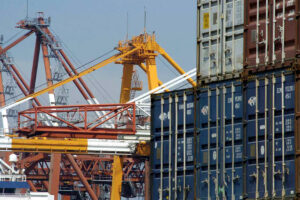THE US Department of Agriculture (USDA) has raised its Philippine rice import forecast by 11.9% to 4.7 million metric tons (MMT), citing rising demand and lowered tariffs.
In its Grains: World Markets and Trade Report, the Philippine import estimate rose from the 4.2 MMT forecast issued in May.
“Total imports are estimated higher on increases for the Philippines, Kenya, and Iraq,” it said.
Rice imports for the Philippines last year amounted to 3.62 MMT, undershooting the USDA forecast of 4.6 million MMT.
The USDA sees domestic rice consumption at 17.4 MMT this year, against the 16.8 MMT estimate for 2023.
The National Economic and Development Authority (NEDA) Board approved a plan to lower tariffs on industrial and farm goods, including the further reduction of rice import tariffs to 15% from 35% until 2028.
The Philippines has imported 2.17 million metric tons (MT) of rice as of June 6, according to the Bureau of Plant Industry (BPI), or about half of the USDA’s projection for the year.
The majority of the country’s rice imports are from Vietnam and Thailand, which account for 72.7% and 15.3% of total imports, respectively.
Vietnam had supplied 1.52 million MT as of May, while shipments from Thailand totaled 319,740.74 MT.
In January, the Philippines and Vietnam signed an agreement giving the Philippines a quota of 1.5 to 2 MMT of rice annually for five years.
Asked to comment, Leonardo A. Lanzona, an economics professor at the Ateneo De Manila, said lowered tariffs will drive up rice imports.
“Imports are already higher even without this new trade policy. The lower tariffs are just accelerating the trend,” Mr. Lanzona said in a Messenger chat.
Federation of Free Farmers National Manager Raul Q. Montemayor said that the effects of El Niño on crops may be more severe than estimated, which could also lead to an increase in imports.
“The impact of El Niño on the second quarter crop is higher than estimated, so import requirements will be larger to fill the gap,” he said in a Viber message.
Last week, the government weather service, known as PAGASA, announced the end of El Niño, adding that conditions in the tropical Pacific have returned to El Niño Southern Oscillation (ENSO)-neutral levels.
Weather conditions that are classified as neither El Niño nor La Niña are considered to be ENSO-neutral.
Agricultural production rose 0.05% during the first quarter, weighed down by El Niño, according to the Philippine Statistics Authority.
“The lowering of tariffs will also make it more profitable for importers to bring in rice even beyond the domestic shortfall, contrary to assurances that this will not happen,” Mr. Montemayor added.
Rizal Commercial Banking Corp. Chief Economist Michael L. Ricafort said that preparations for La Niña could also lead to an increase in rice imports during the rest of the year.
“The preemptive measures to increase local supply and better manage inflation and inflation expectations (involve importing more rice),” Mr. Ricafort said in a Viber message.
In its final advisory, PAGASA said that chances of La Niña setting in are 69% between July and September.
The Philippines imports about 20% of its rice requirement each year. — Adrian H. Halili
